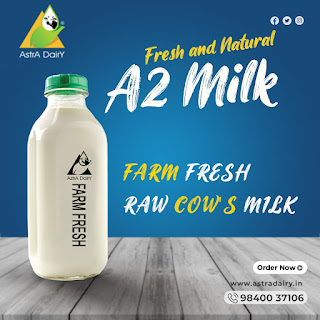Growth and development milk for children, a small gesture that can make a big difference
The little ones do not ingest sufficient quantities of omega 3 DHA, calcium, iron or vitamin D, fundamental in the children's diet. Growth and Development Milk incorporates these essential nutrients and helps balance your diet.
Running around in the playground, learning in class, playing
with their friends, continuing the fun when they get home... The day-to-day
life of a child in their first years of school is very hectic. To deal with it,
he needs to ingest the essential nutrients that allow him to have the energy to
carry out all these activities and continue to grow.
Specifically, from the age of three, when many children
begin their school years, the menus must be increasingly complete and varied.
To meet their nutritional needs in early childhood, children have to eat all
the food groups distributed in five or six meals a day, have a complete and
balanced breakfast and have three or four dairy products.
Consume fruits, vegetables and vegetables daily or increase
the weekly consumption of fish are other recommendations of the Association of
Pediatrics (AEP). Not surprisingly, and unfortunately, the diet of minors is
not always as healthy, complete and balanced as it should be for optimal growth
and health.
The worrying lack of essential nutrients
Omega 3 DHA, iron, calcium, vitamin D or iodine are some of
the essential nutrients for the development of young children. Despite this,
the National Survey of Food in children and adolescents in Spain (ENALIA)
carried out by the Agency for Consumer Affairs, Food Safety and Nutrition,
concluded that the contribution of some nutrients, such as vitamin D or
calcium, is insufficient to cover the dietary needs of children and young
people.
The Association of Pediatrics itself also recognizes that
young children have a relatively high intake of proteins, lipids and saturated
fatty acids and low intakes of omega 3, iron or vitamin D, according to various
studies.
It is estimated that the calcium intake deficit of children
is 75%, while that of vitamin D is 100%. Some worrying data considering that
these two nutrients play a fundamental role in bone growth.
In addition, it is estimated that the children of our
country ingest less than 50% of the recommended daily amount of omega 3 DHA,
essential for brain development, and 64% of children do not reach the
recommended intake of iron, key in their cognitive development.
A deficiency that is not only typical of Spain or of the
smallest: a study by the ESPGHAN Nutrition Committee indicates that lack of
iron is the most common micronutrient deficiency in the world and that young
children are a risk group precisely because its rapid growth requires good
amounts of this mineral.
"The growth from one year to four is quite large, and
that growth rate makes the overall demand for nutrients like polyunsaturated
fatty acids [such as omega 3], vitamin D and iron very high." Although
this growth is large, proportionally children need to eat a smaller amount of
food at these ages and are more capricious when choosing their menu. "That's
why, although many parents try, they can't reach the necessary amounts of these
nutrients," Campoy details.
The current pace of life of parents, with little time to buy
fresh food and cook it properly, can influence this imbalance of food. In fact,
industrial pastries or fast food are some of the options that are frequently
used. "We have to insist that children do not have to take salt under the
age of two, very little and if possible, none under the age of five, and limit
the consumption of added sugar," says Campoy, who is also a professor in
the Department Pediatrics at the University of Granada.
In addition, children themselves begin to prefer certain
food groups at this stage of their lives, which influences their diet. In this
sense, it must be taken into account that their culinary preferences are in the
process of being defined, so the role of parents in conveying the importance of
a complete and varied diet is fundamental. “Everything you teach children in
the first years of life will determine what they will want to eat when they are
older. That education and that insistence are going to have a very positive
effect,” says Campoy. "We have to educate them in flavors, textures, food
quality and that they know how to choose healthy foods."
Growth and development milk, a useful aid
One of the basic foods that should not be missing from the
diet of school-age children is milk, a rich source of easily absorbed calcium.
In fact, it is recommended that children consume two to three glasses of milk
daily and this liquid should not be missing from their breakfast, an essential
meal to start the day.
Taking into account the deficiencies of key nutrients in the
little ones that we have mentioned, adapted milks or growth milks also provide
a nutritional profile superior to that of cow's milk and help them complete
their daily diet.
As pointed out in the Decalogue on milk for growth in young children
prepared by the Association of Pediatrics in collaboration with the two most
relevant nutrition foundations, milk adapted from the first year They can be a
"useful aid" from one year of age and complementary to the infant
diet to reach the recommended intakes of omega 3 DHA, iron or vitamin D.




Thank you for sharing this blog, it is informative and useful. A2 Milk is a very popular brand of milk. Everyone knows A2 Milk. Because this milk has high vitamins, proteins, fats, and carbohydrates. It comes from non-injected cows. That reason only in this milk stays top. Organic farm in Chennai provide natural cows milk, and natural raw milk.
ReplyDelete